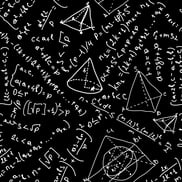In the following article, we’re going to delve into mental math and manual calculation best practices for the GMAT exam. You can either read this article or watch the corresponding video on YouTube. To make things easier to digest, we’ve broken the contents of the video up into 3 parts. If you haven’t read part 1 yet, we recommend you go back and do that before venturing further. In this segment, we will specifically discuss the strategic implications of the GMAT’s mathematical components. In segment 3, we’ll outline the manual calculation drills on mathaids.com.
Read MoreGMAT & MBA Admissions Blog
Mental Math & Manual Calculation (Part 2: Strategic Implications)
Posted by Lili Traviato on March 8, 2023 4:15:00 PM CST
Tags: GMAT, GMAT Blog, gmat calculation
Mental Math & Manual Calculation (Part 1: Question Types)
Posted by Lili Traviato on February 18, 2023 10:15:00 AM CST
In the following article, we’re going to delve into mental math and manual calculation best practices for the GMAT exam. You can either read this article or watch the corresponding video on YouTube. To make things easier to digest, we’ve broken the contents of the video up into 3 parts. In this segment, hosted by one of MyGuru's most experienced GMAT tutors, we will specifically discuss the different question types that require calculations on the exam. In segments 2 and 3, we’ll outline recommended calculation strategies and the manual calculation drills on mathaids.com
Read MoreTags: GMAT prep, GMAT, gmat calculation
Logical estimation might be the single most important tactic for GMAT problem solving questions in the quantitative reasoning portion of the GMAT. We’ve already written an article that covers GMAT problem solving questions and strategies more generally, so we recommend you take a moment to read that before continuing if you haven’t yet. Moving forward, this article will address the following key topics:
● A general description of quantitative logical estimation and the conditions under which it should be utilized
● An overview of the strategic implications of logical estimation
● An example of logical estimation in the context of arithmetic
● An example of logical estimation in the context of word problems
● A summary of the logical estimation problem solving process
Quantitative Logical Estimation
Simply put, logical estimation refers to the process of continuously eliminating impossible answer choices as you tackle a problem. As any online GMAT tutor will tell you, it is one of the most important strategies to employ on the GMAT. In other words, thinking critically about what must be false in addition to what must be true can make the difference between an average score and a great score. Not only will this strategy save you time, but it will also allow you to maintain laser focus as you work through the problem-solving section of the test. More specifically, this method is especially useful when a question asks you to seek a range or approximation rather than a specific value.
To effectively implement the logical estimation process, one of your fist considerations as you read through a problem should be where the viable answer falls within the following binaries:
● Positive or negative
● Even or odd
● Integer or non-integer
● Factor or non-factor
● High or low
For example, if the question makes it clear that the correct answer must be even, you can immediately discount all answer choices that are odd–thereby increasing the likelihood of selecting the correct answer.
Strategic Implications
In addition to the binary-based elimination strategy mentioned above, you would be well advised to take the following strategic measures:
● Consciously note your choices at the beginning of the problem for estimation considerations
● Stop and select the correct choice if through estimation only one answer remains viable
● Avoid blindly guessing by using logical estimation until you’ve been stuck for 20 seconds without progressing
● Make note of key terms such as “Approximate” or “Closest to,” as they indicate cases in which logical estimation could be your primary problem-solving tactic.
Arithmetic Example
Question:
104 - 94 is closest to:
A. 1
B. 100
C. 1,000
D. 3,500
E. 6,500
Logical Estimation Process:
1. Set up a scratch pad listing choices vertically from A to E
2. Note inexact sought value and label choices as such
● 104 - 94 is closest to ?
3. Read from the beginning, taking notes and noting logical estimation opportunities to avoid unnecessary calculations
● Eliminate A, B, C
● 94 = 92 x 92 = 81 x 81
● Approximate as 80 x 80 = 6,400
● 10,000 – 6,400 = 3,600
● Select Choice D
● Beware of Too Fast Trap Choice E
Word Problem Example
Question:
If set N is comprised solely by each of the prime numbers less than 20, and the sum of the reciprocals of the terms in set N is a, what must be true of a?
A. a < 0
B. a < ½
C. a < 1
D. 1 < a < 2
E. 2 < a
Logical Estimation Process:
1. Set up a scratch pad listing choices vertically from A to E
2. Note inequalities in choices, not a single numeric value and label choices as such
● What must be true of a?
3. Read from the beginning, taking notes and noting logical estimation opportunities to avoid unnecessary calculations
● List Prime Numbers < 20 as 2, 3, 5, 7, 9, 11, 13, 15, 17, 19
● Note Reciprocals as 1 over each of the terms (ie. ½, ⅓, ⅕, etc.)
4. Work through the problem while consciously considering logical estimation as your primary tactic
● Use common fractions to decimal conversions to determine that ½ + ⅓ + ⅕ = 0.5 + 0.333 + 0.2 > 1
● Eliminate choices A, B, and C
● Note only seven terms remain each ≤ ⅐ remaining sum < 1
● Eliminate E and select choice D!
Summary of Logical Estimation Problem Solving Process
1. Set up a scratch pad listing choices vertically from A to E
● Note large numeric differences or ranges in choices
2. Skip to the end of the problem and label choices as sought value(s)
● Note if seeking a non-specific value
3. Read from the beginning, taking notes and doing needed calculations
● Seek time saving opportunities by not fully calculating
4. Work through the problem while using chosen tactic until one choice remains viable
● Eliminate impossible choices as you go to expedite the process!
If you are looking for more advice, consider requesting a 1-1 consultant with an expert GMAT tutor.
Tags: GMAT problem solving, GMAT practice questions, gmat calculation
 Performing mental math calculations faster and more accurately is a surprisingly important element of success on the GMAT. And for any given ability level, It’s also important to gain confidence in your mental math abilities before taking the GMAT. Confidence is often half the battle. At the same time, practicing, having strategies in your mind, and understanding where and how mental math is important can all breed confidence.
Performing mental math calculations faster and more accurately is a surprisingly important element of success on the GMAT. And for any given ability level, It’s also important to gain confidence in your mental math abilities before taking the GMAT. Confidence is often half the battle. At the same time, practicing, having strategies in your mind, and understanding where and how mental math is important can all breed confidence.
Tags: GMAT tutor, GMAT resources, GMAT Blog, MBA Admissions, gmat test prep, gmat study skills, improving your gmat score, gmat math, gmat tutorial, gmat free tutorial, gmat calculation, gmat calculator


